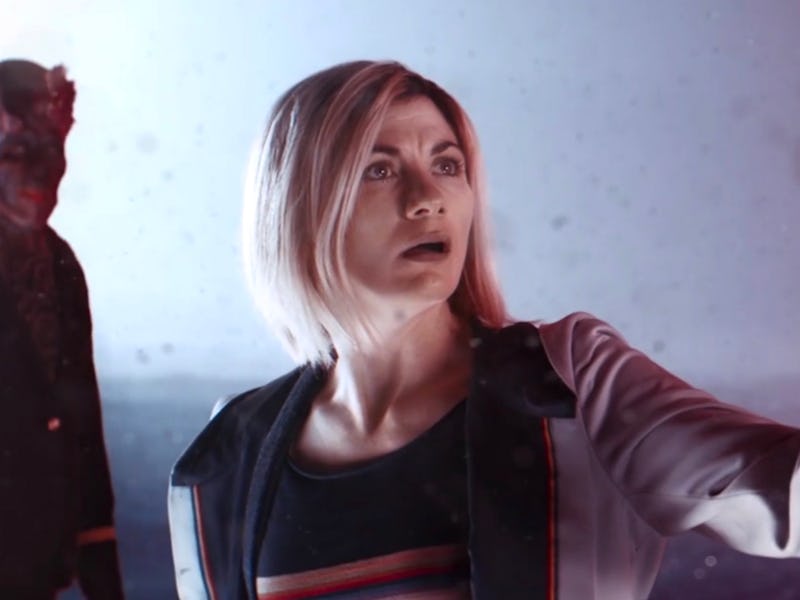Doctor Who: Flux just fixed the worst part of the Jodie Whittaker era
“The Halloween Apocalypse” felt like the return to an earlier era of Who. Here’s why.

Doctor Who is back. As Jodie Whittaker’s 13th Doctor embarks on her final adventure, the long-running sci-fi series finally feels like it has a new lease on life. Season 13 of Who’s modern era carries with it the ominous subtitle “Flux,” indicating things in the Whoniverse are changing.
The season’s debut episode, “The Halloween Apocalypse,” greets this bold new future by reaching back to an older aesthetic the series hasn’t seen in years. Here’s how Doctor Who: Flux is channeling the spirit of the show’s David Tennant and Matt Smith years. Spoilers ahead.
“The Halloween Apocalypse” is genuinely hilarious. If you need a break from the self-serious science fiction like Dune or Foundation, this Doctor Who episode introduces the Lupari, a species of sentient dogs. In one pivotal moment, the Doctor (Jodie Whittaker) realizes the Lupari aren’t planning on invading Earth with billions of space ships; instead, the species plan on taking every single human being off-world on their ships in an effort to save them.
Turns out, the Lupari are a “bonded species,” which means they have a duty to protect humans. Once the Doctor realizes this, she responds with a perfect Who quip about “man’s best friend...”
Karvanista, the dog alien you didn’t know you needed...
This blend of high-drama (the universe is ending!) with goofy-as-hell aliens (gruff dogs trying to save us!) is a cocktail that could only work in Doctor Who. This is the franchise that gave us the Adipose, tiny sentient pieces of fat, as well as the aggressive Sontarans, aliens that basically look like evil versions of Mr. Potato Head. (And they’re back too!) Even the Daleks — the most famous nemesis of the Doctor — have an element of absurd comedy to them. With Flux, the Who franchise has remembered that its space cataclysms don’t really play unless you have the kitsch cranked all the way up to 11. (Or in this case, 13.)
Arguably, this delicate balance of absurdity and epic scale has been what’s been largely absent from the Jodie Whittaker era. While her portrayal remains one of the best takes on the titular Time Lord, many of the best 13th Doctor stories have been either dour or small in scope. In fact, the best episodes from Season 12 pushed the Doctor into a dark place, even as the show was rewriting the backstory of its lead characters. By the end of last season, the Doctor’s home planet of Gallifrey had been destroyed again, and two companions — Ryan (Tosin Cole) and Graham (Bradley Walsh) — departed the TARDIS forever. Major events took place in these episodes, but a sense of loss defined their storytelling.
Somehow, that’s changed. Having the Doctor teamed up with Yaz (Mandip Gill) and bringing in a new companion Dan (John Bishop), Who has been essentially rebooted yet again. We know and love Yaz from the previous two seasons, but Dan is an immediately worthwhile addition in that he allows us to reboard the TARDIS with fresh eyes. Even here, the show gets in a good joke; when the Doctor drops the famous “bigger on the inside” line about the TARDIS, Dan responds, “Yeah, I think a mate of mine had one of these.”
It’s a quick throwaway line, but it’s important. In many ways, Dan feels like Catherine Tate’s Donna Noble from way back in Season 4. He’s got a down-to-Earth vibe, but he has less baggage than previous companions Ryan and Graham. In short, having yet another new companion might seem like too much, but “The Halloween Apocalypse” needed Dan. Bishop’s quickly charismatic and winning in the role; we wanted him to make his date with Diane (Nadina Albina) and we’re heartbroken when he can’t.
Without small, human scenes like this Doctor Who can’t work. This is what makes the show great.
Who used to do this sort of thing effortlessly. In the 2005-2010 Christopher Eccleston/David Tennant eras, terrestrial relationships between “ordinary” people on Earth only served to ground the silly, over-the-top space action in real human concerns. We worried about Rose’s family, even though they weren’t on the TARDIS.
The Whittaker era approached this previously, in “Demons of the Punjab,” when Yaz met her grandmother in 1947. But a family dynamic was already present on the TARDIS, as Graham was Ryan’s step-grandfather. “The Halloween Apocalypse” does a great job of reminding us why Earth and its people are so important outside of the Doctor’s travels. Even the mysterious character Claire (Annabel Scholey) — who is zapped by a Weeping Angel — feels both pivotal and realistically drawn.
The Doctor has often said Earth is “protected,” but with “The Halloween Apocalypse” we’re given reasons to invest in its survival. We’re worried about Clarie and Diane. We’re concerned that Dan needs to continue his work at the food bank. Yaz reminds us that her whole family is on Earth, too.
Somehow, by throwing the entire kitchen sink of Doctor Who madness — Sontarans and Weeping Angels — into one storyline, Flux manages to make the show relatable. Whittaker even borrows the first line uttered by Eccleston’s Doctor in 2005: “Nice to meet you, Dan, run for your life!”
It’s a strange paradox of silly humor and life-or-death-stakes that shouldn’t work. Then again, at its best, Doctor Who is a show that eats paradoxes for breakfast.
Doctor Who: Flux airs new episodes on Sundays on BBC America. The easiest way to watch the new episodes is with the AMC+ app.